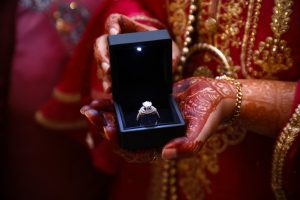 Two of the most important factors in diamond purchasing are diamond color and diamond clarity. First, they determine significantly how beautiful the diamond looks and secondly, they are next to carat the two most important indicators of the price of the diamond. Normally, one has a limited budget available for the purchase of a diamond, for example, for an engagement ring or a watch. This means that one is forced to ask oneself whether the diamond color or the diamond clarity is more important to one.
Two of the most important factors in diamond purchasing are diamond color and diamond clarity. First, they determine significantly how beautiful the diamond looks and secondly, they are next to carat the two most important indicators of the price of the diamond. Normally, one has a limited budget available for the purchase of a diamond, for example, for an engagement ring or a watch. This means that one is forced to ask oneself whether the diamond color or the diamond clarity is more important to one.
Diamond color
Even though there are diamonds that have a distinct color, most diamonds, and the ones you look for when you are looking for an engagement ring are the colorless diamonds. The more colorless a diamond is, the more expensive it is, as it then reflects the surroundings best and shines the most. The color of a diamond is indicated on a scale from D to Z, where D stands for a colorless diamond and Z for a yellowish diamond. Since the differences in color between diamonds are very small, they can only be indicated by experts. This works under perfect light conditions on a white background. The expert will look at the diamond with a magnifying glass and hold sample stones of other shades of color next to it to categorize it afterward. The color categories were once determined by the gemological institute of America – the GIA – and have since been valid internationally. If the diamond is purchased from a reputable dealer, he will always include the GIA certificate, which is considered a mark of quality.
Diamond clarity
The clarity of a diamond indicates how many small imperfections and inclusions the diamond has. However, the search for the perfect diamond will be impossible to succeed, so small imperfections are part of the purchase of a diamond. These imperfections of the diamond are caused by the fact that diamonds are formed underground under extreme pressure and heat in rock layers – imperfections are therefore quite normal. The size of these irregularities determines the degree of clarity of a diamond, which you can also confirm on other websites, for instance click here.
Diamonds without such impurities are extremely rare. Although there are also categories of lower quality, only diamonds of the following categories should be purchased. Flawless diamonds have the highest category and are therefore extremely expensive. They have no flaws whatsoever. The next best category is VVS1 or VVS2 diamonds, which have very, very small inclusions that can only be seen under 20x magnification. Next come VS1 and VS2 diamonds with small inclusions, which still require 10x magnification. Diamonds with small inclusions, some of which are already visible to the naked eye, are classified as SI1 and SI2. Diamonds of the cheaper categories such as I1 or I2 are usually no longer suitable for engagement rings or watches and are therefore less in demand. The purchase of diamonds in these categories should be avoided.
 In my opinion, the question has already been asked incorrectly, as there is no absolute answer to it. It depends much more on what the diamond is meant for. In the following I would like to show with a few examples of how different relevant the color and the diamond purity can be.
In my opinion, the question has already been asked incorrectly, as there is no absolute answer to it. It depends much more on what the diamond is meant for. In the following I would like to show with a few examples of how different relevant the color and the diamond purity can be.